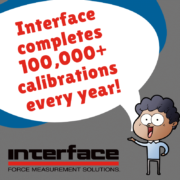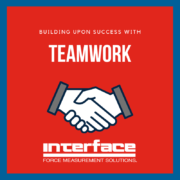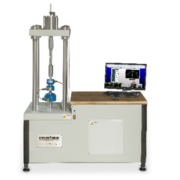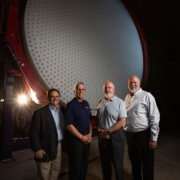Extending the Calibration Range of a Transducer
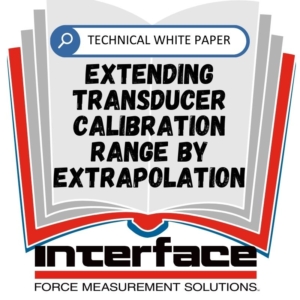 Interface has added a new technical white paper to our library, Extending Transducer Calibration Range by Extrapolation. This detailed engineering report delves into the concept of extrapolating the partial capacity calibration to full capacity, possibly thereby providing an increase in confidence in the extended range. The following is a brief introduction to the white paper and explanation of how extrapolation can increase confidence in your data.
Interface has added a new technical white paper to our library, Extending Transducer Calibration Range by Extrapolation. This detailed engineering report delves into the concept of extrapolating the partial capacity calibration to full capacity, possibly thereby providing an increase in confidence in the extended range. The following is a brief introduction to the white paper and explanation of how extrapolation can increase confidence in your data.
Introduction
Force and torque transducers must be calibrated in a laboratory in order to be useful in their intended application. Applications of the transducers range from relatively basic process measurements to relatively critical calibration of other transducers or equipment. The laboratory calibration consists of loading the transducer with known masses and lever arms or using a comparison method where load is generated by hydraulic or pneumatic means and the transducer under test is compared to a reference transducer. In either method, the cost of calibration equipment rises rapidly with increasing capacity.
Many calibration laboratories have means to calibrate force up to about 10,000 lbf and torque up to about 20,000 lb-in. But capability for higher ranges is scarce. In fact, there are a very limited number of laboratories in the United States that have capability for force over 200,000 lbf and torque over 100,000 lb-in.
There has been some practice in the past by some manufacturers of transducers to calibrate a high capacity transducer at partial capacity and leave the owner to go on hoping and guessing for the sensitivity of the upper end of the capacity. This gives rise to the concept of extrapolating the partial capacity calibration to full capacity, possibly thereby providing an increase in confidence in the extended range.
When Full Capacity Calibration is Not an Option
Strain gage transducers are basically linear. That is, the output follows the input at a near constant ratio. The nonlinearity is routinely measured and typically is in range of ± 0.10%FS or less. This provides for the ability to interpolate values between calibration points with near zero error. But the same is not true for extrapolation which is really estimating values that are beyond the observable range. Conventional wisdom has it, and logically so, that extrapolation is not a valid method of calibration.
Extrapolating is similar to forecasting and that idea helps one realize the liability of it. But the various methods of extrapolation are not all equal. The purpose of this paper is to explore a method that has reasonable validity when economic considerations do not permit a full capacity calibration.
Extrapolation Methods
There are multiple methods of extrapolation. In the white paper, we outline three methods: Linear (0 and last point), Linear (last 2 points) and Poly (calibration points). We also expand upon the best methods for extrapolation by comparing these three methods, as well as demonstrating how to conduct the various methods. The goal of the white paper is to explain how to use extrapolation for best results.
The white paper goes into in-depth details on extrapolation, providing our customers and partners with a blueprint for extending transducer calibration range. If you’re interested in seeing the results and learning more, download the whitepaper here: Extending Transducer Calibration Range by Extrapolation.
For technical questions about Interface transducers and calibration, contact our applications engineers.
You can find additional technical white papers here.
